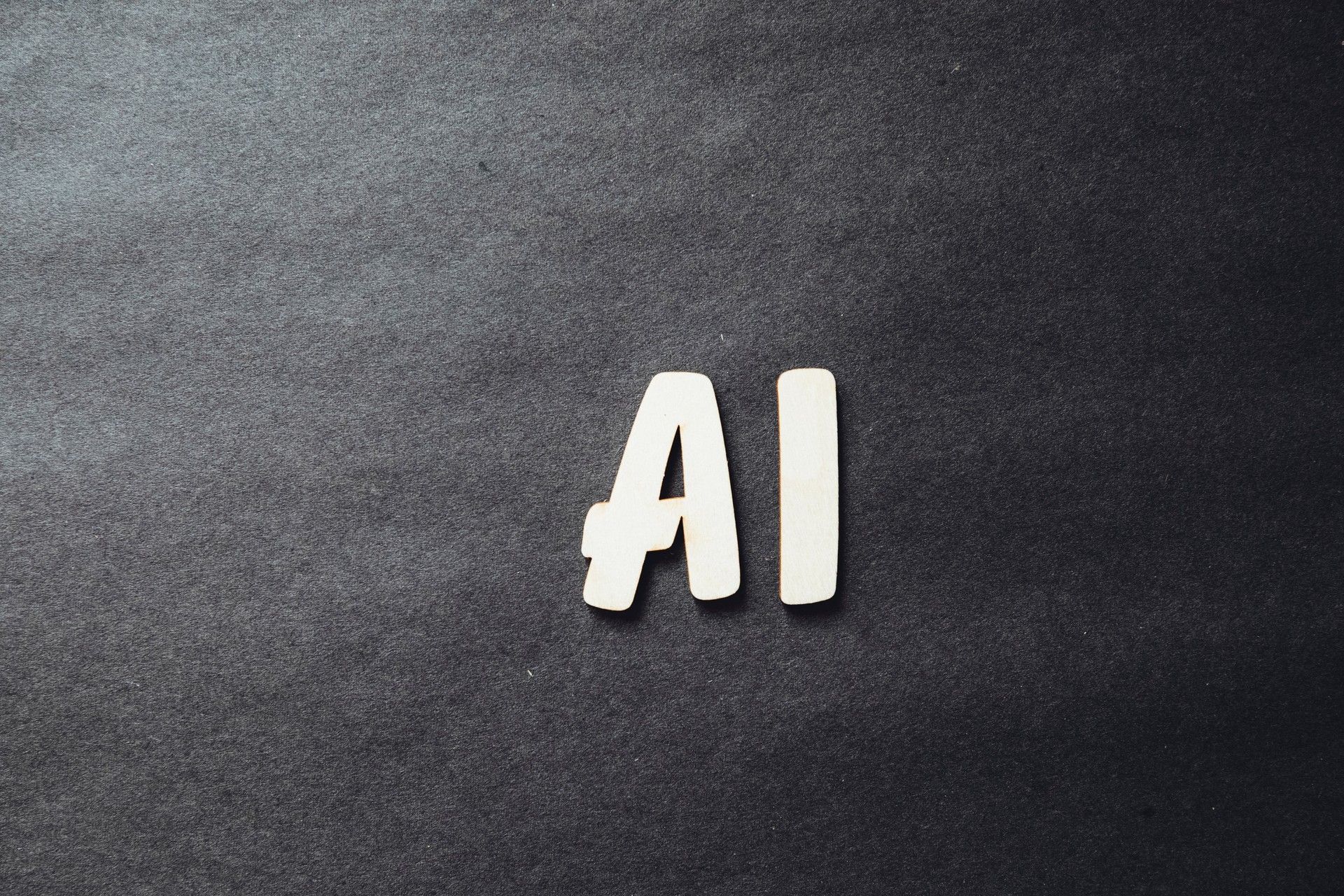Do you want to revolutionize your business operations and boost productivity? Hyper automation is the game-changer you’ve been looking for. In the modern fast-paced and competitive business world, traditional automation is no longer enough. Hyper automation, which uses cutting-edge technologies like AI and ML, can help you automate even the most complex tasks.
This means that your team can focus on more strategic and value-added work, while hyper automation takes care of the day-to-day operations. As a result, you can streamline your workflows, reduce errors, and improve efficiency.
Hyperautomation is not just about automating tasks. It’s also about using AI and ML to gain insights into your data and make better decisions. This can help you improve your customer service, optimize your marketing campaigns, and make more informed business decisions.
If you’re ready to take your business to the next level, hyper automation is the way to go. It’s the future of work, and it’s here to help you succeed.

What is hyper automation?
Hyperautomation is a powerful framework and a collection of advanced technologies that supercharge automation in businesses. The ultimate goal of hyper automation is to create a streamlined process for automating various tasks within an organization. This cutting-edge approach incorporates a range of innovative technologies.
- Tools for process mining and task mining, which help identify and prioritize areas where automation can be applied
- Automation development tools that make it easier and more cost-effective to build automation. These tools include RPA (robotic process automation), user-friendly no-code/low-code development platforms, integration tools like iPaaS, and workload automation tools
- Business logic tools that enable easier adaptation and reuse of automation. Examples of such tools include intelligent business process management, decision management, and business rules management
- AI and machine learning tools that enhance the capabilities of automation. These tools cover a wide range of functions, such as natural language processing (NLP), optical character recognition, machine vision, virtual agents, and chatbots
The term “hyper automation” was coined by the esteemed IT research and advisory firm Gartner in 2019. It emerged from the realization that traditional robotic process automation (RPA) had limitations when it came to scaling and achieving a wide array of automation tasks at the enterprise level. Hyperautomation, on the other hand, provides a strategic framework for deploying various automation technologies, including RPA, either on their own or in combination, alongside AI and machine learning advancements.
Implementing hyper automation involves a deliberate and systematic approach to automation. It starts with identifying the tasks suitable for automation, selecting the right tools, and leveraging automation capabilities to drive agility. Additionally, organizations can extend the power of automation by incorporating AI and machine learning in different ways. Typically, hyper automation initiatives are overseen by a center of excellence (CoE) that helps coordinate and drive automation efforts.
The objective of hyper automation extends beyond cost savings, increased productivity, and operational efficiency gained from automating various processes. It also involves utilizing the valuable data generated and collected through digital processes to make better business decisions in a timely manner.

What are the different types of hyper automation technologies?
Hyperautomation is a transformative approach that harnesses the power of various advanced technologies to drive automation in businesses. It involves the seamless integration of multiple tools and methodologies to streamline and optimize processes. By leveraging a combination of cutting-edge technologies, hyper automation enables organizations to achieve unprecedented levels of efficiency, productivity, and innovation. Let’s delve into the key components of hyper automation and understand how each technology contributes to this holistic automation strategy.
Robotic Process Automation (RPA): Automating repetitive tasks with efficiency
Robotic Process Automation (RPA) empowers organizations to configure software robots capable of executing repetitive and structured tasks within digital systems. These robots emulate human interactions with software applications, automating workflows and reducing manual effort. RPA eliminates errors and speeds up processes, enabling employees to focus on more strategic and value-added activities. By automating mundane tasks, RPA enhances productivity and unlocks significant time and cost savings.
Machine Learning (ML): Enabling intelligent decision-making
Machine Learning is a technology that empowers computers to learn from data and improve their performance over time without explicit programming. ML algorithms enable systems to identify patterns, make predictions, and take autonomous actions. By leveraging ML, hyper automation empowers organizations to automate complex tasks that require data analysis, such as fraud detection, predictive maintenance, and customer behavior analysis. ML-driven automation enables organizations to make data-driven decisions, enhance accuracy, and uncover valuable insights.
Artificial Intelligence (AI): Emulating human-like decision-making
Artificial Intelligence focuses on creating machines capable of emulating human-like decision-making processes. AI systems can analyze complex data sets, interpret natural language, and perform tasks that typically require human intelligence. Within hyper automation, AI plays a pivotal role in automating tasks that involve logical reasoning, problem-solving, and decision-making. By harnessing AI, organizations can automate intricate processes, optimize resource allocation, and deliver personalized experiences to customers.
Big Data: Extracting insights from vast data sets
Big Data technologies enable the storage, analysis, and management of massive volumes of data generated by devices, sensors, and digital systems. In hyper automation, Big Data provides the foundation for extracting actionable insights and identifying patterns that drive optimization and innovation. By leveraging data analytics and data mining techniques, organizations can uncover valuable information, make informed decisions, and create optimized solutions. Big Data enhances hyperautomation by facilitating data-driven automation and improving overall operational efficiency.

Cobots: Collaborative robotics redefining work environments
Cobots, short for collaborative robots, are revolutionizing work environments by seamlessly collaborating with human workers. These robots are designed to share tasks and work side-by-side with humans, augmenting their capabilities and improving efficiency. Cobots excel in enhancing production processes, as they can perform repetitive and physically demanding tasks, while humans focus on complex problem-solving and creative activities. By integrating cobots into hyper automation strategies, organizations can achieve a harmonious man-machine collaboration, leading to increased productivity and improved work environments.
Chatbots: AI-powered conversational interfaces
Chatbots are AI-driven systems that utilize Machine Learning and Natural Language Processing (NLP) to engage in real-time conversations with humans via text or speech. They provide automated and interactive customer support, assist with information retrieval, and streamline various communication processes. Chatbots enhance hyper automation by automating customer interactions, reducing response times, and delivering personalized experiences. With their ability to understand and respond to human queries, chatbots elevate customer service and enable organizations to efficiently handle high volumes of inquiries.
What are the benefits of hyper automation?
Hyperautomation brings forth a multitude of benefits for companies, improving their performance and fostering a positive work environment. Let’s explore the advantages that this transformative approach offers:
Integration of disruptive technologies
Hyperautomation seamlessly integrates disruptive technologies like Artificial Intelligence (AI), Machine Learning (ML), Robotic Process Automation (RPA), and Natural Language Processing (NLP) into the daily operations of a company. This integration enables faster and more efficient processes, reducing errors and enhancing overall productivity. By leveraging these advanced technologies, organizations can optimize their workflows and achieve greater accuracy, efficiency, and quality in their operations.
Increased employee satisfaction
One of the remarkable outcomes of hyper automation is the boost in employee satisfaction. By automating mundane and repetitive tasks, employees can focus on more meaningful and value-added work. This smart working environment eliminates time wasted on tedious activities that do not contribute to the core objectives of the company. As a result, employees experience higher job satisfaction, as they can utilize their skills and creativity to drive innovation and tackle complex challenges. This elevated sense of fulfillment and purpose enhances the overall well-being of the workforce.
Digital transformation
Hyperautomation paves the way for organizations to embark on a digital transformation journey. By aligning business processes with investments in technology, companies can evolve and adapt to the ever-changing digital landscape. Through hyper automation, businesses can leverage the power of cutting-edge technologies to optimize their operations, gain a competitive edge, and stay ahead in the market. This digital transformation enables organizations to embrace innovation, enhance customer experiences, and achieve sustainable growth.

Reduction in operating costs
According to Gartner, the strategic combination of hyper automation technologies with redesigned operating processes can lead to a substantial reduction in operating costs. By streamlining and automating workflows, companies can achieve greater efficiency and eliminate unnecessary expenses. This optimization, coupled with the elimination of manual errors, results in significant cost savings. Gartner predicts that by 2024, hyper automation has the potential to reduce costs by up to 30%, driving financial benefits for organizations.
Effective decision-making with big data and AI
Hyperautomation harnesses the power of Big Data and AI technology to extract valuable insights from vast amounts of data. By leveraging Big Data analytics and AI algorithms, organizations can derive meaningful business information, identify patterns, and make data-driven decisions. This empowers companies to respond promptly to market trends, customer demands, and emerging opportunities. Hyperautomation equips decision-makers with the tools to effectively utilize data, enhance strategic planning, and achieve optimal outcomes.
How does hyper automation work?
The combination of Robotic Process Automation (RPA) with the power of Artificial Intelligence (AI) and Machine Learning (ML) is what forms the foundation of hyper automation technology. This synergy enables the integration of automation in areas that were previously inaccessible, infusing newfound power and flexibility into various operations. Tasks that were once deemed impossible to automate can now be seamlessly executed, freeing up human capabilities to focus on high-value activities like decision-making, data interpretation, and critical thinking.
Hyperautomation platforms come in various forms and can be implemented on top of the technologies that companies already possess. While RPA serves as the primary platform, intelligent business process management suites (iBPMS), integration platforms as a service (iPaaS), and information engines also play significant roles. These platforms provide the necessary infrastructure to orchestrate and streamline complex workflows, ensuring the seamless integration of automated processes. By leveraging these platforms, organizations can maximize their existing technology investments while embracing the transformative potential of hyper automation.
Hyperautomation can also facilitate the creation of a Digital Twin Organization (DTO), which serves as a virtual representation of a product or workflow. A DTO simulates how various processes interact and showcases where value is created in real-time. By utilizing the power of hyper automation, organizations can leverage the DTO to gain invaluable insights into their operations, identify bottlenecks, and optimize processes. This virtual model enables businesses to make informed decisions, improve efficiency, and enhance overall performance.

Hyperautomation vs traditional automation
In the past, enterprise automation focused on finding the best ways to implement automation within specific contexts. These approaches involved creating highly specific automations tailored to individual software applications. For instance, workload automation relied on scripts to automate repetitive processes, while Business Process Management (BPM) tools automated tasks within specific workflows. These traditional approaches were limited to specific functionalities and required expertise in software-specific automation techniques.
Hyperautomation takes automation to the next level by incorporating Artificial Intelligence (AI) and Machine Learning (ML) capabilities. With AI, automation can handle a wider range of tasks, such as Optical Character Recognition (OCR) for document reading, Natural Language Processing (NLP) for comprehension, or Natural Language Generation (NLG) for providing summaries to humans. Hyperautomation simplifies the infusion of AI and ML into automation processes through pre-built modules accessible via app stores or enterprise repositories. This integration enables organizations to leverage advanced AI and ML capabilities without extensive customization or development efforts.
5 cost-saving automation trends for young startups to implement now
Low-code development tools have also emerged as a way to reduce the expertise required for creating automation. These tools provide a visual interface and pre-built components that simplify the development process. In the context of hyper automation, low-code development tools further enhance the ease of automation creation. Process mining techniques can identify potential automation opportunities and automatically generate new automation prototypes. While these automatically generated templates may require human refinement to improve quality, advancements in hyper automation are reducing the need for extensive manual intervention.
How can businesses use hyper automation to improve their productivity?
Businesses can leverage hyper automation to significantly enhance productivity across their operations. Hyperautomation combines advanced technologies such as artificial intelligence (AI), machine learning (ML), robotic process automation (RPA), and natural language processing (NLP) to automate and streamline various tasks and processes.
By implementing hyperautomation, businesses can achieve the following benefits:
- Efficient process automation: Hyperautomation enables businesses to automate repetitive and manual tasks, eliminating the need for human intervention. This frees up valuable time and resources, allowing employees to focus on more strategic and value-added activities.
- Enhanced accuracy and quality: With hyper automation, businesses can minimize errors and improve the accuracy of their processes. By leveraging AI and ML capabilities, data can be analyzed and validated more effectively, reducing the risk of human errors and ensuring consistent quality.
- Streamlined workflows: Hyperautomation allows for the seamless integration of different systems and technologies. It enables the smooth flow of information and data across various departments and applications, eliminating bottlenecks and enhancing collaboration between teams.
- Scalability and agility: Businesses can scale their automation efforts with ease using hyper automation. The modular and flexible nature of hyper automation technologies enables organizations to quickly adapt to changing business needs and rapidly deploy automation solutions across different functions and processes.
- Data-driven insights: Hyperautomation generates a wealth of data through the automation of processes. Businesses can leverage this data to gain valuable insights into their operations, identify areas for improvement, and make data-driven decisions to drive efficiency and productivity.
- Employee empowerment: By automating mundane and repetitive tasks, hyper automation empowers employees to focus on higher-value activities that require critical thinking, creativity, and problem-solving skills. This not only improves job satisfaction but also enables employees to contribute more strategically to the organization’s success.
- Continuous improvement: Hyperautomation facilitates continuous improvement by providing visibility into processes and performance metrics. By analyzing automation results and monitoring key indicators, businesses can identify opportunities for optimization and refine their automation strategies over time.
With many more to add to the list, hyper automation offers businesses a powerful framework to boost productivity and efficiency. By automating processes, leveraging advanced technologies, and empowering employees, businesses can unlock significant gains in productivity, streamline operations, and drive sustainable growth.





